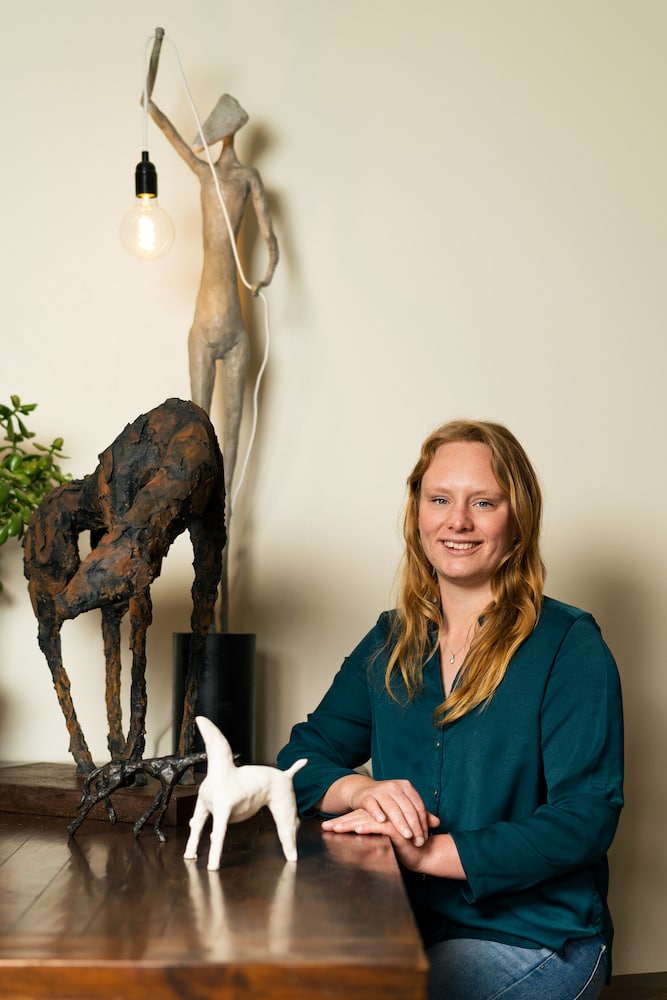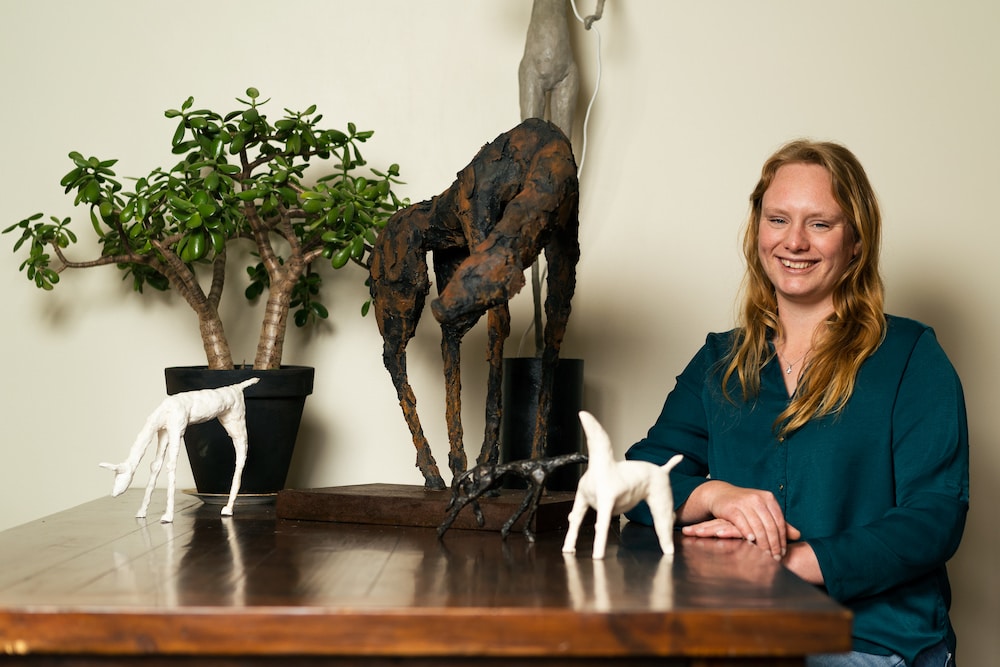When the ACT plunged into lockdown in August, Canberra sculptor Sian Watson had to quickly improvise and adapt her practice.
Locked out of her studio, a large, converted shed on her parents’ property in Wallaroo, Watson had to ingeniously repurpose her single-car garage at her Cook flat into a miniature working space.
It was quite a change of pace from her typical workspace where noise isn’t a problem and required a combination of problem solving and changes to her making.
“At Wallaroo I can make as much noise as I want, so I’ve got a lot of angle grinders and welding and steel work that I do there,” she said.
“Here there’s not too much mess I can make, and noise wise we’re surrounded by close neighbours, so my normal making style wasn’t appropriate.”
This led her to use what she could to make a mould.
At the end of November, Watson took home the Rosalie Gascoigne Memorial Award at CAPO’s 38th Annual Grants Round.
The funding received with the award will go toward casting in bronze a series of wax sculptures made during the lockdown.
“The fact that I now have funding is just a huge relief. Potentially some of the works wouldn’t have been cast.”
Having grown up admiring the work of Gascoigne, Watson said it was a “great honour” to receive an award named after the artist.
Working a part-time job at Access Canberra, Watson has been practicing for the six years now since leaving university.
She said going to arts school in Canberra was “fantastic” due to the number of connections she made from it.
“That was really the jumping board for what I’m doing at the moment and where I’ve been able to get to,” she said.
“Canberra has a really supportive arts community … there’s lots of opportunity, so putting your hand up all the time for all sorts of things is a good thing.”
Sculptures inspired by modern and prehistoric art

While she casts some of her works in bronze, typically Watson’s process involves welding up a steel armature, covering it in mesh, then mixing up concrete to apply to the surface. From there it is covered in a rust paint.
“I just like that material sense of rust, and also because it’s evident of time and degradation,” she said.
The pieces themselves usually depict characters that are a fusion of human and animal in an elongated form.
This is done in part to make viewers consider the shared environments and shared experiences between humans and animals.
“I know that might be quite broad and vast,” she said, “but I like making works that don’t say one thing and it’s up to the viewer to decide.
Watson cites her influences as the elongated figures by twentieth century Swiss sculptor Alberto Giacometti and prehistoric works from across the globe.
“I have been developing a lot of works around that style,” she said, “I really love how humans have been represented, and you get these God-like creatures, I suppose.
“Who knows what a lot of the background stories are to them? And that’s what I love, pulling from those ideas and developing my own.”
The pandemic more broadly has fortunately seen Watson show several exhibitions and continue selling her work.
“I’ve been really fortunate in that regard … I know a lot of artists have struggled so I feel very lucky,” she said.
If all goes to plan, Watson will exhibit a work at Sculpture by the Sea in Bondi next year; she was first tapped on the shoulder to participate in 2020, so it’s been a long time coming.
Aside from that she is looking to adapt and push her style of making further, but admittedly is “not much of a planner”.
“I’m at that tipping point of what’s next, but I haven’t decided what the next stage is.”
Get all the latest Canberra news, sport, entertainment, lifestyle, competitions and more delivered straight to your inbox with the Canberra Daily Daily Newsletter. Sign up here.



